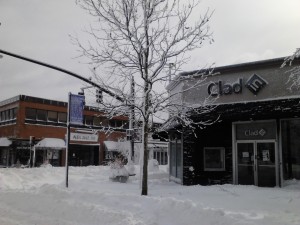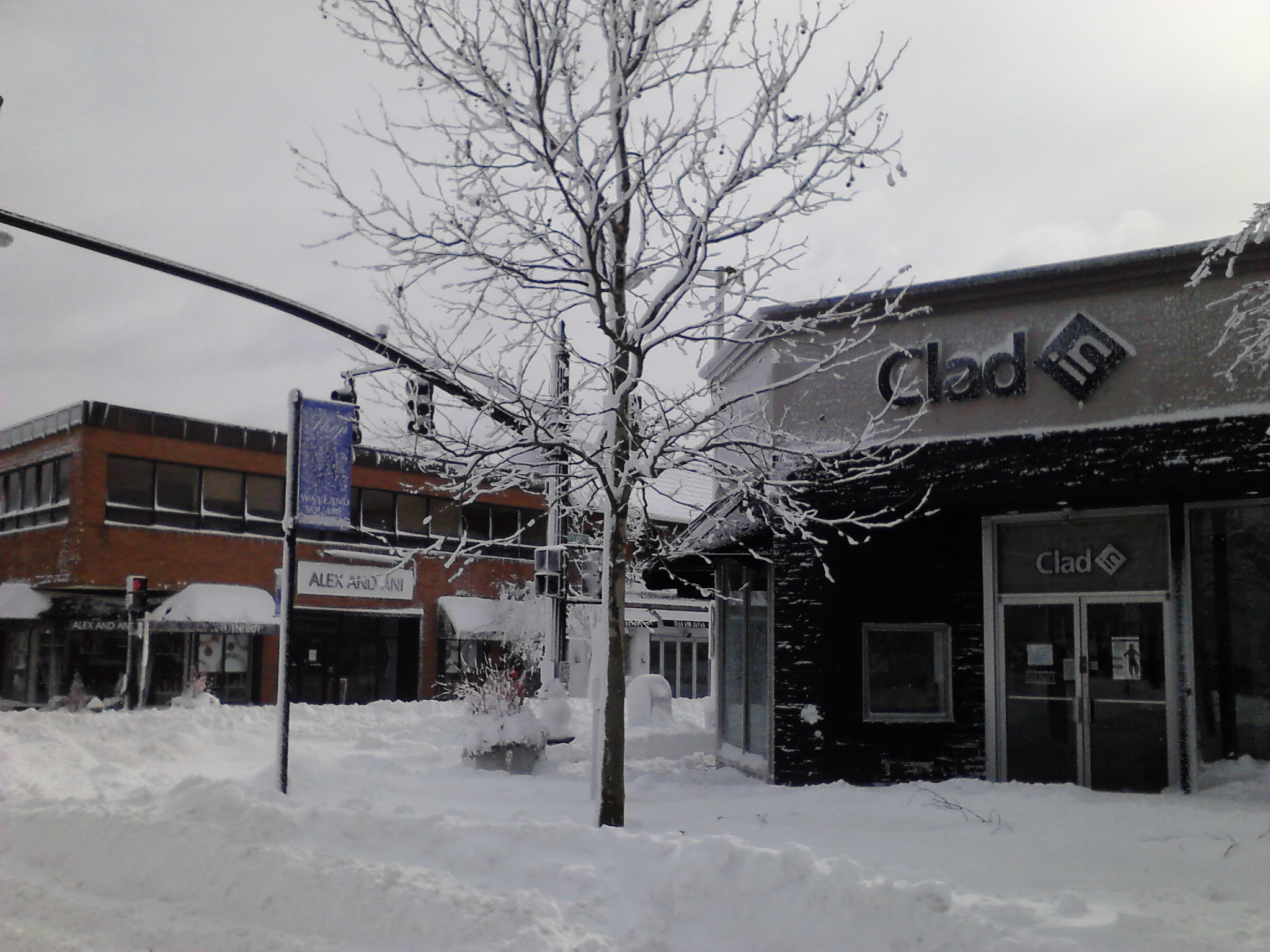
Here, urban density and neighborhood spirit combine to make a fun community. Having a lot at hand is especially important in a place like RI where we can get two feet of snow. Many places with high density have a strong neighborhood spirit. Jane Jacobs, one of the original Urbanists and author of Life and Death of Great American Cities, used such spirit to organize Greenwich Village in New York. President Obama and the First Lady speak lovingly of their Hyde Park area of Chicago.We here in poor-grad-student-no-car-world appreciate the cool city planning that make it simple to live without the awesome power of internal combustion. To live without a car, a person selects a place with good walking infrastructure. It should combine social places, necessities (drugstore, groceries), schools, and residences.
One great example of this here in Providence is the Wayland Square area. It has great shops, bars, two major grocery stores, and a CVS. The people of the neighborhood frequent the shops, and the neighbors see each other in social settings.
Saturday, I went to get coffee at the Artisan Café, which bravely opened its doors during the snowstorm. The place was full of neighbors drinking coffee, eating sandwiches, and asking about one another’s wellbeing. Children brought snow-covered sleds right to their tables. The staff knew almost every customer, and the customers knew the staff members. This neighborhood spirit happens less often in less dense, single-use neighborhoods.
Too often today, we build vast areas of only houses. This comes from a shift in policy after the advent of the car. Many of the popular areas to live – Greenwich Village, Brighton, MA, Cambridge, MA, or Wayland Square – were the original suburbs, based around the streetcar. These were meant to be self-sufficient areas, but where everyone took the streetcar into town to work in the morning. The Thayer Street tunnel was the streetcar tunnel connecting the East Side to downtown.
What changed all of this was America’s immediate and deep love for the car. People demanded that city life reorganize around the vehicle. After World War II, everyone wanted their own house, own car, and own land. Now we have learned how harmful this can be to the environment and to community spirit. Cities and density make for vibrant life, more productive workers, and the economies of scale that save money and fossil fuels. Edward Glaeser notes in Triumph of the City that 29% of those who commute to work by public transit exclusively live in one of New York’s five boroughs. Such a thorough and impressive public transit system comes only from the kind of density and use that NYC provides.
Unfortunately, the residents of single-use only residential areas must rely on cars for any trip, no matter how simple. This strains our environment and keeps us reliant upon foreign oil. Not only that, but it allows people to go for ages without talking to their neighbors. Residents drive to work, park in the work parking lot, drive home, park in the driveway, walk in their doors, and never interact with someone they do not already know. Humans are meant to be more social than that. Glaeser blames the proliferation of such neighborhoods partially on the home mortgage interest deduction of the tax code. Such a deduction, without a corresponding rent deduction for city dwellers, makes the tax code skew heavily in favor of less dense, single-use living.
Mixed-use is not always perfect. It can lead to people becoming quite parochial. I always find it hilarious when someone in Manhattan talks of something in Brooklyn as incredibly far. My aunt and uncle in New York fall into this category.
People like having their own house, their own yard, and their own car. The suburbs are popular places to live because they have a lot to offer. Many of the people who live around Wayland live in their own detached houses, but with small yards (though they must not seem so small when one is shoveling them free of snow). In a larger city, though, mixed use means apartments.
In Providence, most Brown students get around without cars. The website Walkscore.com gives College Hill a 90 (out of 100) and Wayland Square an 80. Check this site out and think about it when you graduate and move on. Live in a neighborhood where you can do a lot without a car. You never know who you will bump into.
